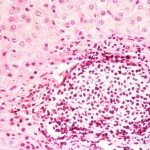Lien vers Pubmed [PMID] – 18337580
J. Virol. 2008 May;82(10):4955-64
Koi herpesvirus (KHV) is the causative agent of a lethal disease in koi and common carp. In the present study, we describe the cloning of the KHV genome as a stable and infectious bacterial artificial chromosome (BAC) clone that can be used to produce KHV recombinant strains. This goal was achieved by the insertion of a loxP-flanked BAC cassette into the thymidine kinase (TK) locus. This insertion led to a BAC plasmid that was stably maintained in bacteria and was able to regenerate virions when permissive cells were transfected with the plasmid. Reconstituted virions free of the BAC cassette but carrying a disrupted TK locus (the FL BAC-excised strain) were produced by the transfection of Cre recombinase-expressing cells with the BAC. Similarly, virions with a wild-type revertant TK sequence (the FL BAC revertant strain) were produced by the cotransfection of cells with the BAC and a DNA fragment encoding the wild-type TK sequence. Reconstituted recombinant viruses were compared to the wild-type parental virus in vitro and in vivo. The FL BAC revertant strain and the FL BAC-excised strain replicated comparably to the parental FL strain. The FL BAC revertant strain induced KHV infection in koi carp that was indistinguishable from that induced by the parental strain, while the FL BAC-excised strain exhibited a partially attenuated phenotype. Finally, the usefulness of the KHV BAC for recombination studies was demonstrated by the production of an ORF16-deleted strain by using prokaryotic recombination technology. The availability of the KHV BAC is an important advance that will allow the study of viral genes involved in KHV pathogenesis, as well as the production of attenuated recombinant candidate vaccines.
